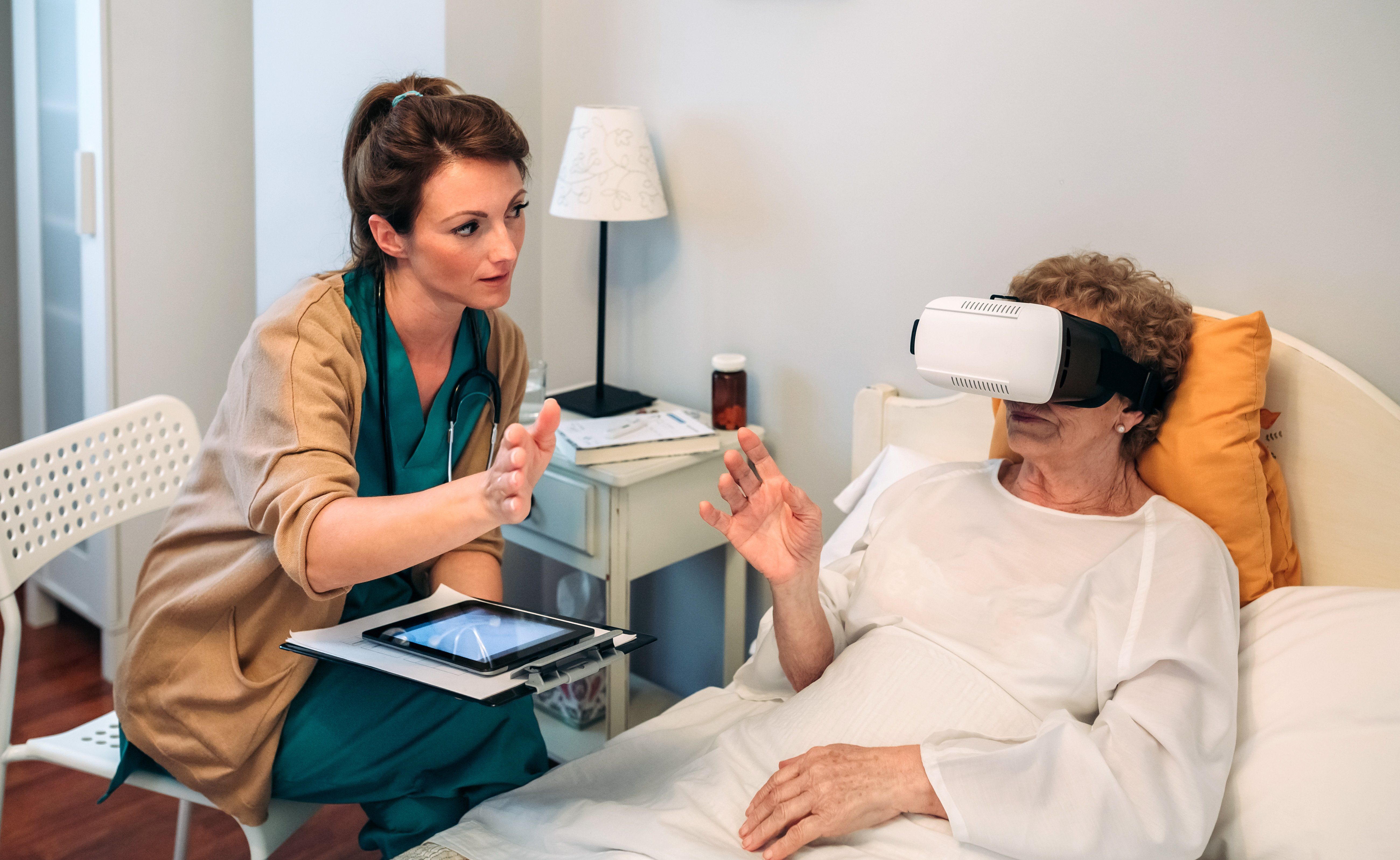Opinion: Using High Tech to Improve High-Touch Care for the Elderly
What about applying virtual reality tech to improve how we deliver person-centered care to all, including a focus on seniors? This is one area ripe for innovation.

When we think of virtual reality (VR) and healthcare, we often think of skills training-and in that regard, it’s an amazing tool. As we know, however, healthcare is about much more than technical expertise. Many of us are exploring options for using technology to scale programs and services for specific groups, including the growing senior population. But, what about applying VR tech to improve how we deliver person-centered care? This is one area ripe for innovation.
It is expected that the U.S. population of 65 years and older will double to 95 million in just four short decades, yet many people remain unaware and unprepared for the challenges that come with aging. Friends, family and neighbors, unless seniors themselves, don’t have insight into the day-to-day challenges their older loved ones face. There is also often a significant age difference between the health care provider and the elderly patient, creating a possible generational disconnect between the two. This lack of understanding can lead to feelings of isolation in seniors and frustration for their caregivers.
Related: Virtual Reality-Based Group Therapy Benefits Cancer Patients
Fortunately, as VR becomes increasingly accessible, it can serve as tool to provide insight into the aging experience, resulting in increased empathy for the seniors in our lives. Like never before, this technology allows us to experience, first-hand, the unseen physical and emotional hardships that often accompany growing older-such as hearing loss, macular degeneration, or caring for someone with dementia.
For those serving the senior population, VR can be used to enhance current high-touch patient care practices. High-touch care is rooted in providing a thoroughly supportive patient experience with a care team actively involved in the senior’s life and in tune with their unique needs. Technology cannot replace human interaction, but we can use it to improve how we interact with seniors. I’m speaking from experience. When I was a practicing physician, I had many senior patients and I thought I did a good job of acknowledging how their chronic conditions and limitations impacted their life, but there’s a difference between knowing the challenges and truly understanding the impact.
The Trading Ages Virtual Reality (TAVR) program developed at SCAN allows doctors, caregivers, legislators, emergency services personnel, law enforcement professionals-or anyone who interacts with older adults-to immerse themselves in the otherwise inaccessible aging experience. Participants walk away with a deeper understanding of their older community members, empowering them to provide better service regardless of their field of expertise.
Last year, over 400 firefighters were trained, marking the first training of its kind within the City of Long Beach. Participants shared they walked away with greater insight and empathy.
Following an introduction by a SCAN facilitator, TAVR program participants don VR goggles and go through a series of simulations. These include how it feels to interact with a spouse who has dementia, what common experiences like doctor visits and dining out are like with limited hearing and vision. These simulated encounters are incorporated into the larger educational session that is delivered in a group setting, giving participants a real sense of the physical, social, and emotional aspects of aging.
There’s a lot of buzz around the use of technology in healthcare. Therefore, it’s interesting to point out that our Trading Ages program existing for many years before we added the VR component. It was effective before as an interactive experience, but we’ve seen the difference these simulated real-life experiences can make. People relate to it on a very personal level-and that’s where empathy starts.
Using technology to improve how we care for, design for, and serve older adults is a great example of combining high-tech and high-touch. Striking that balance is the key to the future of healthcare.
Romilla Batra is chief medical officer of SCAN sets clinical policies and procedures. She provides physician oversight of clinical programs including disease management and ambulatory and complex case management; and helps design clinical initiatives that support healthy, independent aging.
In the Scope of Virtual Health and the Future of “Website” Manner, Per Ateev Mehrotra
August 10th 2023Briana Contreras, an editor of Managed Healthcare Executive, had the pleasure of catching up with MHE Editorial Advisory Board Member, Ateev Mehrotra, MD, MPH, who is a professor of healthcare policy at Harvard Medical School and an Associate Professor of Medicine and Hospitalist at Beth Israel Deaconess Medical Center.
Listen
Extending the Capabilities of the EHR Through Automation
August 2nd 2023Welcome back to another episode of "Tuning In to the C-Suite," where Briana Contreras, an editor of Managed Healthcare Executive, had the pleasure of chatting with Cindy Gaines, chief clinical transformation officer at Lumeon.
Listen